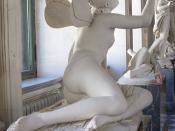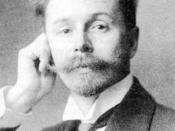In the 1830s, a national musical style -marked with emphasis on folk songs, folk-dances, and especially folk rhythms- began to emerge in Russia. This coincided with similar nationalistic movements in other countries such as Poland, Bohemia, and United States. Before the 1830s, music in Russia was influenced by Italian and French music, mainly opera.
Musical life in the capital St. Petersburg was undoubtedly very rich. Major works of Beethoven, Haydn and Mozart were often performed. Indeed, the greatness of German music and Italian operas at that time encouraged Russian composers to imitate the popular style with no preservation of its national Russian traits. For this reason, Glinka is considered to be the father of Russian classical music: he brought it up to date and into the European mainstream without sacrificing its national identity. The "Russlan and Ludmilla" work stands for a good example of a truly national opera.
Since there was no distinguished Russian Music style before the 1830s, the nationalistic movement; two significant sources of Russian music gave basis for the nineteenth century Russian composers.
Those were church music and folk music. The modal sounds of Russian church music can be easily heard in Rachmaninoff's works, the element of bells is often met (Concerto for piano and orchestra No. 2, c minor; Prelude op. 1 , c sharp minor...) as well as folk tunes. Composers were using folk-songs to write variations on them or as a basis for their compositions (Rachmaninoff, variations on the theme of Corelli and Chopin). Great Russian composers who grew up under the music school of Glinka were Balakirev, Borodin, Mussorgsky and Rimsky-Korsakoff. They continued the use of folk elements.
Main elements of the national tunes are short compact melodies within the repetitiveness of the specific modes. This repetitiveness makes the music very arabesque-...


